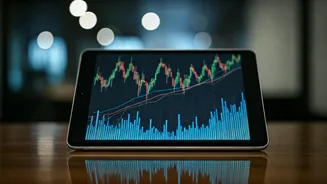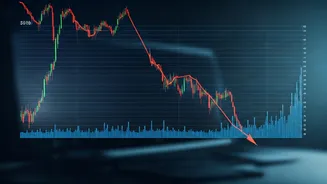IPO Market Overview
The upcoming week will see new entrants in the Initial Public Offering (IPO) market, offering fresh prospects for investment. A total of three IPOs are
scheduled to open: one mainboard issue and two from the Small and Medium Enterprises (SME) sector. IPOs give businesses a chance to raise capital from public investors, which enables expansion and growth. The price bands will give investors insights on the valuation and the estimated price of the shares on offer. IPOs often generate buzz and anticipation, with market analysts and investors closely watching the performance and potential of these new listings. Investors need to evaluate key aspects such as company financials, growth prospects, and sector-specific trends before making decisions. Thorough research and a clear understanding of risk tolerance are essential for informed participation in the IPO market.
Mainboard Issue Launch
The mainboard issue represents a significant offering, usually involving larger, more established companies. These companies undergo stricter regulatory scrutiny and adhere to more stringent listing requirements than SMEs. The mainboard IPO is expected to attract significant interest from institutional investors, as well as retail investors looking for potentially larger-scale investments. Before investing in a mainboard issue, investors should conduct extensive due diligence. This entails scrutinizing the company's financial statements, assessing its market position, and evaluating its overall business strategy. The price band determines the range within which shares will be offered. The actual offer price is determined after considering factors such as investor demand, market conditions, and the company’s valuation.
SME IPOs Unveiled
Two companies from the Small and Medium Enterprises (SME) sector will launch their IPOs in the coming week. SMEs are typically smaller businesses seeking to raise capital to fuel their growth plans. These IPOs offer investors access to emerging businesses, potentially bringing higher growth prospects but also carrying a higher degree of risk. The SME IPOs are generally targeted at a different investor base than the mainboard offerings. Their IPOs are often preferred by investors who have a higher risk appetite and who are prepared to take on more volatile stocks. The price bands for SME IPOs are also set to indicate the expected price range for the shares. The market buzz surrounding these offerings can provide clues about the expected interest level and may give investors a basis for deciding if they want to participate in these IPOs.
Understanding Price Bands
Price bands play a key role in IPOs, establishing the range within which the shares are offered to investors. Companies, in collaboration with their lead managers, establish a price range for each share to be offered. The final offer price, which can be anywhere within the announced price band, is determined through a process of book-building, reflecting the interest of investors. Investors evaluate the price band when determining if they should apply for the IPO. They consider if the stated price is aligned with their valuation expectations. The price bands are made public before the IPO opens. This allows potential investors sufficient time to evaluate the offering and make well-informed decisions. Investors may evaluate the potential for the stock to appreciate in value following its listing, alongside other financial factors.
Market Buzz & Trends
The IPO market is dynamic, constantly influenced by the overall economic climate, sector-specific dynamics, and investor sentiment. The market buzz around a specific IPO can significantly impact its performance, influencing subscription levels and the ultimate listing price. Market analysts provide their assessment of the IPO, often providing their opinion on the company's prospects. This buzz includes market reviews and analysis of company financials. Investors use this information to inform their investment decisions, although these should always be made after they have performed their own due diligence. Economic trends, interest rates, and overall market performance also affect the IPOs. Watching and analyzing market trends can help investors make better investment decisions in the IPO market.










